The Ultimate Guide to Effective Post-Reading Note-Taking
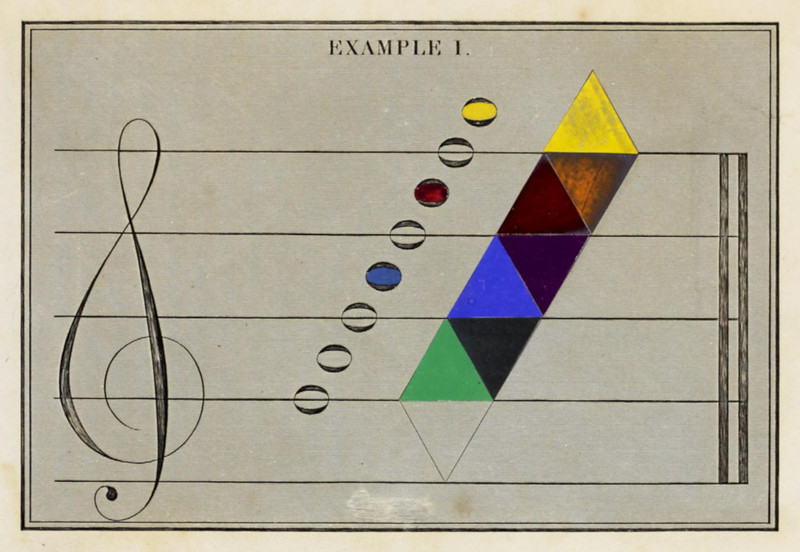
Table of Contents
- Highlights Aren’t Notes. They’re Just Bookmarks.
- Three Simple Rules: Summarize, Connect, Apply
- Step 1: Triage Your Highlights
- Step 2: Convert Highlights into Notes
- Step 3: Create a One-Pager
- Step 4: Create Strategic Flashcards (Optional)
- Step 5: Build Review Cycles
- Step 6: Apply Ideas in Real Contexts
- Why This Actually Works
- The Real Return on Investment
- From Extraction to Integration
- Appendix: Tools and Setup
- Appendix: Summary Table of the Six Steps
Highlights Aren’t Notes. They’re Just Bookmarks.
Most of what we highlight, we forget. Most of what we read, we lose. Not because we’re lazy, but because highlighting isn’t learning; it’s just marking trails we never return to hike.
I used to highlight like my life depended on it. Every book looked like it had lost a fight with a yellow marker. My Kindle clippings were out of control. And I felt like I was doing it right; like the sheer number of highlights was proof I was thinking deeply.
I wasn’t. I was just hoarding.
The truth hit when I scrolled through hundreds of highlights and couldn’t recall why I’d marked any of them. They didn’t help me think better or make decisions. They just sat there as glowing, dead weight.
I was doing the intellectual version of taking screenshots and never looking at them again.
This is what researchers call the collector’s fallacy: mistaking gathering for learning. Highlighting feels productive, but it’s passive. We remember what we generate, not what we consume. Most people don’t revisit their highlights because there’s no structure, no next move, no meaning.
I needed a system that forced active engagement with ideas and pushed me to actually use what I learned.
Three Simple Rules: Summarize, Connect, Apply
So I built one. Not overnight. Not elegantly. But it works.
After years of refinement, I’ve landed on three core principles that transform passive highlights into active knowledge:
- Summarize: Force yourself to rephrase ideas in your own words
- Connect: Link new ideas to existing knowledge and other concepts
- Apply: Use ideas in real contexts within weeks of learning them
The results have been tangible. Negotiation frameworks now save my organization real money. Habit design principles built my consistent writing practice. Decision-making heuristics changed how I evaluate opportunities.
The system has six steps, but you don’t need all six to get value. Start with the first three. Add the rest only if you’re seeing results and want to go deeper.
Here’s the full process, which you can adapt to your level of commitment:
- Triage Highlights
- Convert to Notes
- Create a One-Pager
- Build Flashcards
- Review in Cycles
- Apply in Real Life
Let’s break each one down.
Step 1: Triage Your Highlights
After finishing a book, I let it breathe for a few days. Then I revisit my highlights and apply three quick filters:
- Feynman Test: Could I explain this to a smart 12-year-old?
- The 5R Score: I mentally rate each highlight on
- Relevance: does it apply to my goals?
- Resonance: is it beautiful? Does it spark?
- Rarity: is it novel or non-obvious?
- Return: is it likely to pay off when recalled?
- Reusability: can I apply it across contexts?
- Spark Test: Does it trigger a question, connection, or action?
If a highlight passes at least two of these, I process it. If not, it goes into the archive, with no guilt. This prevents the system from becoming overwhelming busywork.
Most highlights fail this test. That’s fine. You’re looking for the 10-20% worth preserving.

Step 2: Convert Highlights into Notes
Transform surviving highlights into four types of notes:
- [FACT]: Stuff I’ll forget if I don’t anchor it (frameworks, studies, definitions)
- [INSIGHT]: Big ideas that shift my perspective.
- [QUESTION]: Prompts that generate further thinking
- [ACTION]: Stuff I want to try, change, or build.
Every note has to earn its spot. If a note doesn’t fit one of these, it’s probably just a pretty quote, not an idea. That’s okay.
Here’s how one highlight from Atomic Habits becomes four working notes:
Original: “Every action is a vote for the type of person you wish to become.”
- [FACT]: Identity change happens through accumulated evidence of small actions
- [INSIGHT]: Focus on becoming rather than achieving; identity drives behavior more than goals
- [QUESTION]: What type of person do my current habits vote for?
- [ACTION]: Before starting a habit, define the identity it represents (e.g., “I am someone who writes daily”)
Now I’ve got four useful notes, instead of one passive highlight. Each note gives me something specific to think about, remember, or do.
I also tag each note by topic (leadership, productivity, decision-making, etc) so I can surface related ideas across different books.
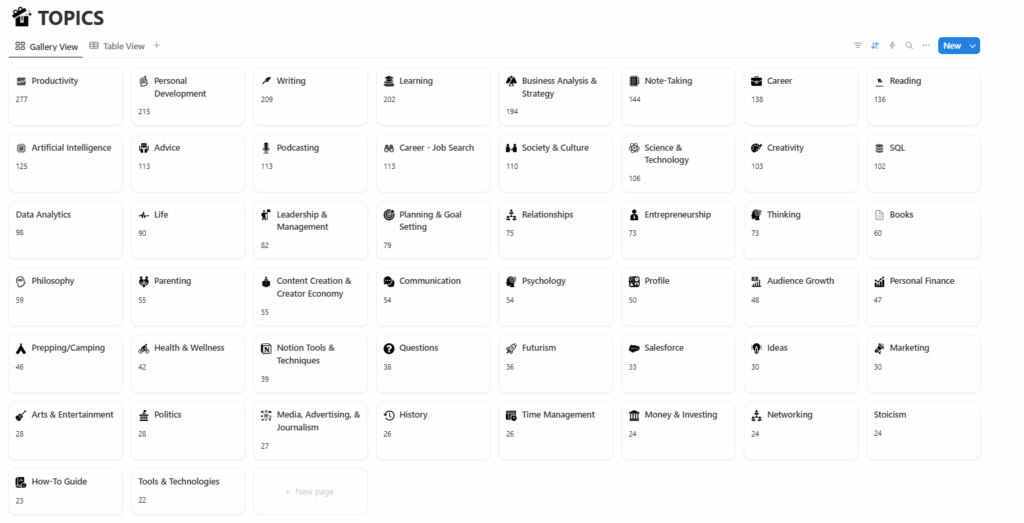
And for every chapter or key section, I jot down a quick summary: one or two sentences, in my own words.

Step 3: Create a One-Pager
While processing notes, I create a single document that distills the entire book. The One-Pager forces me to recall, rephrase, and compress; three memory power-ups.
Here’s the basic template I use:
- Title, author, date finished.
- A 3-sentence summary.
- 5 key takeaways.
- 2-3 favorite quotes.
- My reaction/criticism.
- 2 or 3 open questions.
- Links or connections to other books or ideas
- 1-2 immediate actions.
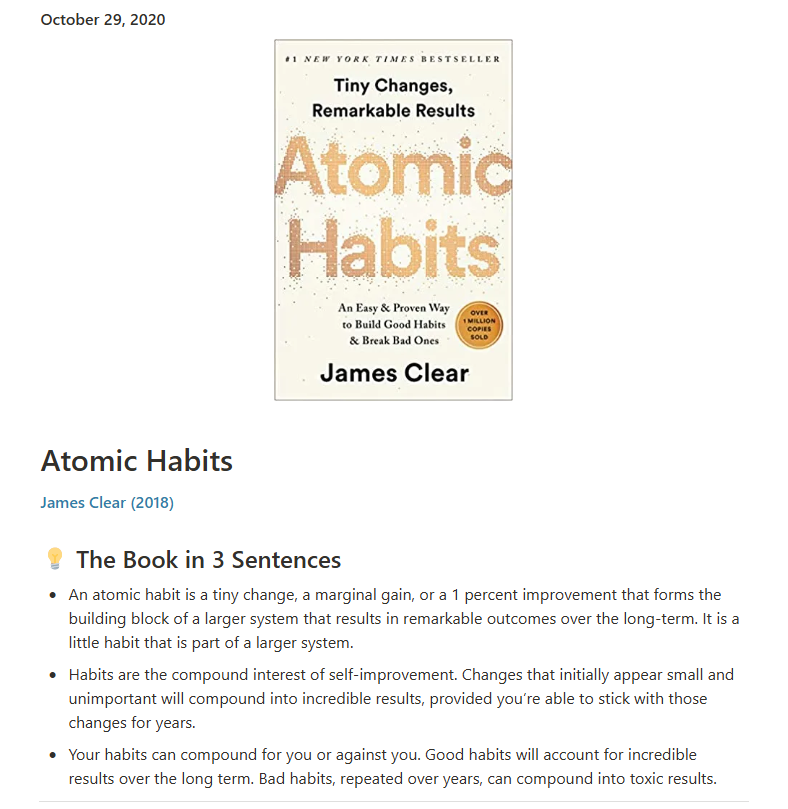
The one-pager becomes my anchor for future reference and often seeds longer writing projects. During quarterly reviews, I can scan 20 one-pagers in 30 minutes and immediately recall the core value of each book.
Stop here if you’re testing the system. These first three steps take about 90 minutes and deliver most of the value. The remaining steps are for ideas you want to truly master.
Step 4: Create Strategic Flashcards (Optional)
If the one-pager helps you summarize and synthesize, the next step is all about retention through spaced repetition.
Not every idea needs flashcards, but some concepts demand repetition. For these, I create cards using three main types:
- Cloze Deletions: Great for testing conceptual frameworks.
- An atomic habit is a {{c1::tiny change}} that forms the building block of remarkable outcomes.
- Q&A: Better for challenging myself to explain ideas.
- Q: According to James Clear, what is an atomic habit??
- A: It’s a tiny change or improvement that compounds into remarkable results over time.
- Application Cards: Great for practical use. They bridge the gap between theory and practice.
- Q: How can you use the principle of ‘make it invisible’ to break a bad habit?
- A: Delete social media apps, log out after each use, or hide triggers. Add friction to accessing the habit.
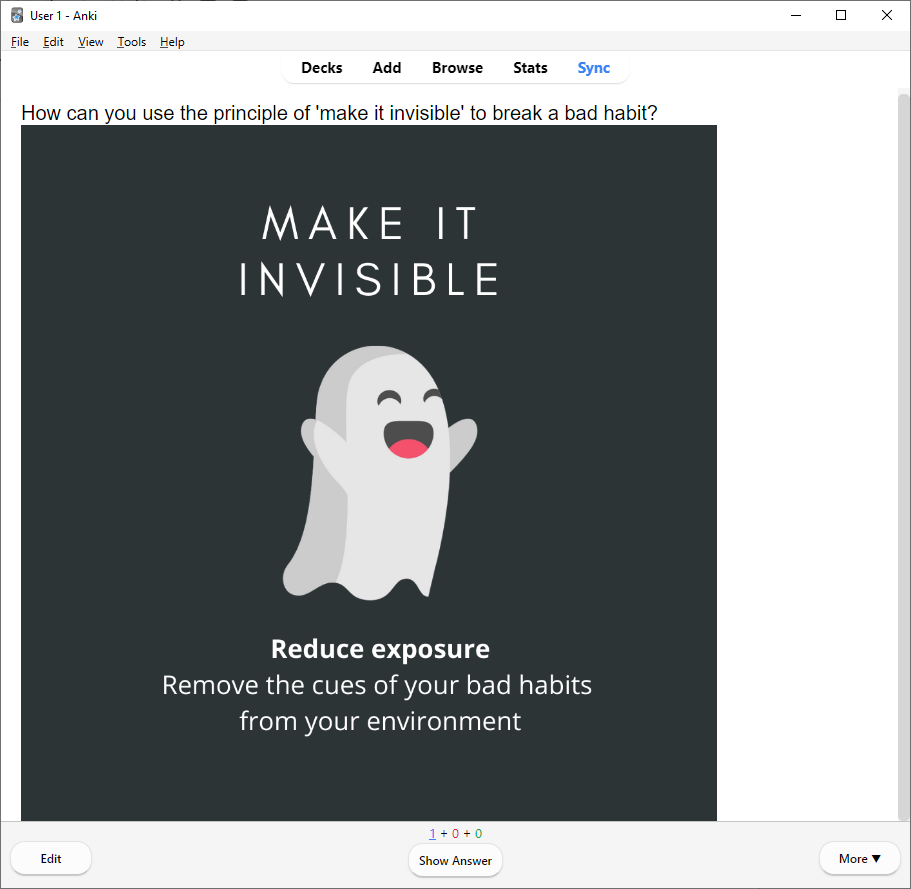
I try to keep this set lean. If I’m dreading a review session, it’s a sign I’ve added too much. My current active deck has about 150 cards from 12 books; roughly 12 high-value cards per book.
These cards also get tagged with the same tags as on my notes, so I can pull up cards by topic later. This part sounds nerdy. It is. But it makes my notes findable and useful.
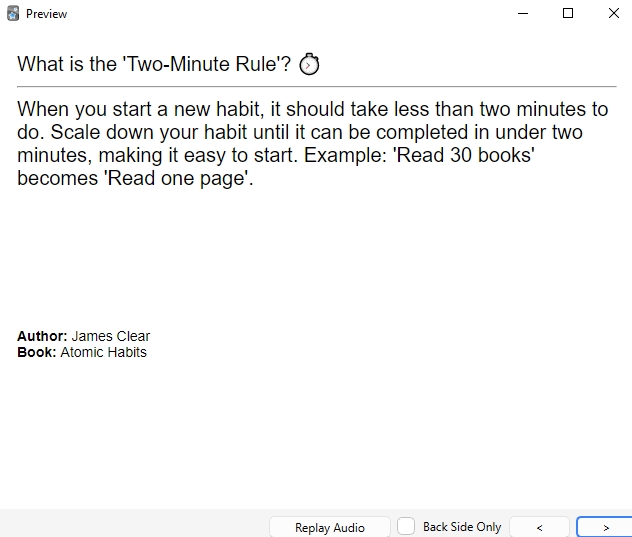
Step 5: Build Review Cycles
Memory doesn’t come from exposure. It comes from reactivation. I use a simple schedule:
- 1 week after reading: Review the one-pager and top notes
- 1 month after: Test flashcards and update weak ones
- 3 months later: Scan during weekly planning or project reviews
To make this frictionless, I use a topic-tagged dashboard in Notion. Tags like ‘decision-making’, ‘creativity’, and ‘philosophy’ let me filter ideas by topic. During quarterly reviews, I can resurface insights from 20+ books in under 10 minutes.
During each review, I ask: “Would I explain this the same way now?” “Do I still care about this?” “Has this idea shown up in real life yet?”
If an idea feels stale or irrelevant, I’ll revise it, merge it with something more current, or delete it altogether.
Step 6: Apply Ideas in Real Contexts
The real test comes in application. Notes exist to be used. Every week, during planning, I ask: “Where can I use this right now?”
Application locks ideas into long-term memory better than any flashcard. When I teach a concept, write about it, or use it to make a real decision, it becomes part of how I think.
Ideas don’t stick because they’re clever. They stick because they do something.
Why This Actually Works
This system aligns with core principles from cognitive science:
- Retrieval practice is more effective than rereading
- Elaboration and synthesis (explaining in your own words) promote deeper understanding
- Spaced repetition strengthens long-term memory
- Contextual application (applying ideas in projects) creates usable knowledge
You don’t need to know these terms to benefit, but designing around how learning actually works makes a difference.
The Real Return on Investment
Let’s be honest about the math. The time investment averages 2-3 hours per book. If you’re reading 50 books a year, that’s potentially 150 hours of processing time; almost a month of full-time work.
That sounds insane until you flip the question: How much time do you currently spend re-reading sections because you can’t remember what mattered? How often do you buy books you’ve already read because nothing stuck? How many great ideas have you lost to the highlight graveyard?
The real waste isn’t the time you spend processing. It’s all the time you spend consuming without retaining. I’d rather read 20 books that change how I think than speed through 100 and remember nothing.
But here’s the thing: you don’t need to process every book at maximum intensity. Use this system for the 10-20% of books that genuinely matter to your goals. The rest can stay as light reads, audiobook walks, or simple one-pagers. The system scales to your priorities, not the other way around.
Over the years, I’ve processed dozens of books through this system. The returns compound:
- Better decisions: I regularly draw on frameworks and mental models when facing new challenges.
- Clearer thinking: My knowledge system feeds directly into articles, presentations, and strategy.
- Pattern recognition: Ideas from different domains cross-pollinate in unexpected ways.
- Confidence: I trust my ability to extract and retain value from complex material.
From Extraction to Integration
Systems Should Liberate, Not Limit
I built this note-taking system to bring order to my intellectual life, not to trap it. I don’t want to become someone who spends more time tending the system than thinking, reading, or living.
The goal isn’t to optimize every insight or process every book with equal intensity. Some ideas need time to breathe before they need structure. But when you do find material worth preserving, this system ensures it becomes part of how you think and make decisions; not just another forgotten highlight.
It’s not perfect. Sometimes I skip steps when life gets full. Some books are better experienced than analyzed. That’s why flexibility is key: start simple, then layer complexity only where it earns its keep.
This three-part cycle—Summarize, Connect, Apply—transforms information into wisdom by guiding me:
- from passive highlighting to active reflection
- from cluttered quotes to distilled insight
- from isolated reading sessions to integrated, ongoing thinking
It’s a living, breathing workflow. It bends with my seasons of energy, focus, and curiosity. The goal isn’t to master the system but to let it grow with me. Every idea I keep earns its place by sharpening my thinking, fueling my creativity, or informing my decisions.
Try the first three steps with your next good book. You’ll feel the difference immediately. Ideas begin to spark across domains. You shift from collector to craftsman. You stop drowning in highlights, and start using them.
Reading without reflection is like pouring water into a sieve. But with the right system, you don’t need to remember everything you read; only the right things. And those stay close at hand.
|
Content Upgrade
|
If this resonated, I’ve got more where this came from:
- The 3×3 Method: A Minimalist Post-Reading Note-Taking System for Busy People
- Book Notes: Meditations
- Book Notes: Atomic Habits
- Book Notes: How to Take Smart Notes
Appendix: Tools and Setup
Note Capture:
- Kindle for digital highlighting
- Apple Notes for quick thoughts
- Notion for structured notes and one-pagers
- Paper journal for analog books
Active Recall:
- Anki for flashcards (desktop + mobile sync)
- Google Calendar for review reminders
Synthesis:
- Google Docs for long-form writing
- Weekly review sessions
- Quarterly system audits
- Cross-linking between related concepts
The tools matter less than the thinking. Start with whatever you have and refine as you go.
Appendix: Summary Table of the Six Steps
|
Step |
Goal | Output |
| 1. Triage | Filter high-value highlights | Shortlist of 10–20% |
| 2. Convert |
Reframe into usable formats |
Tagged notes |
| 3. One-Pager | Compress and summarize | Book digest |
| 4. Flashcards | Retain with spaced repetition |
Lean deck |
| 5. Review | Reactivate ideas regularly | Topic-tagged Notion/Index |
| 6. Apply | Embed knowledge in life |
Decisions, writing, actions |